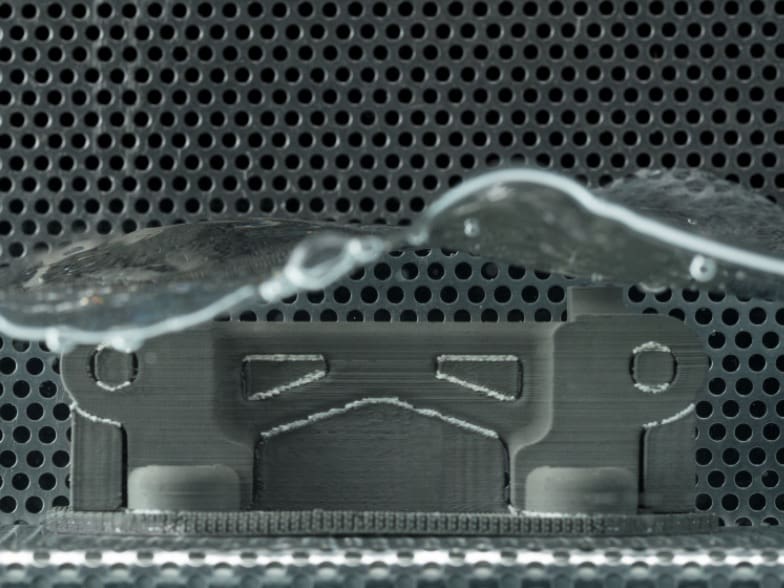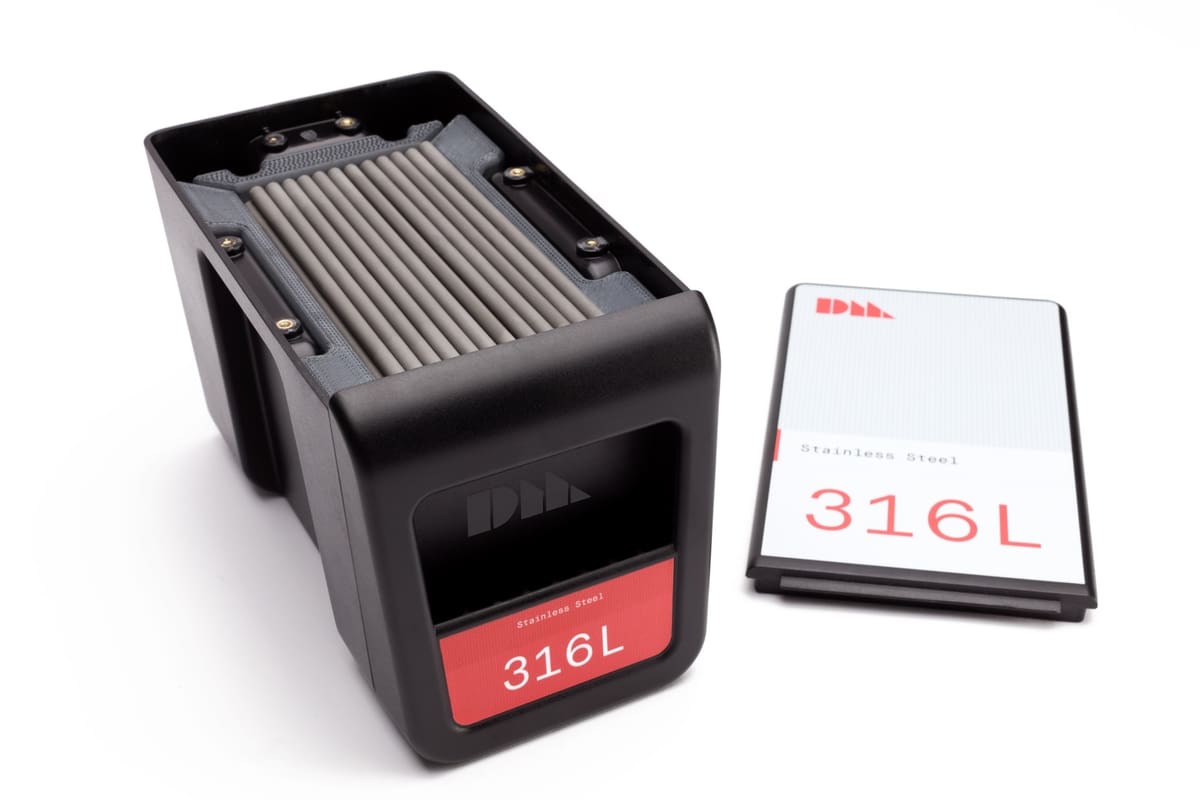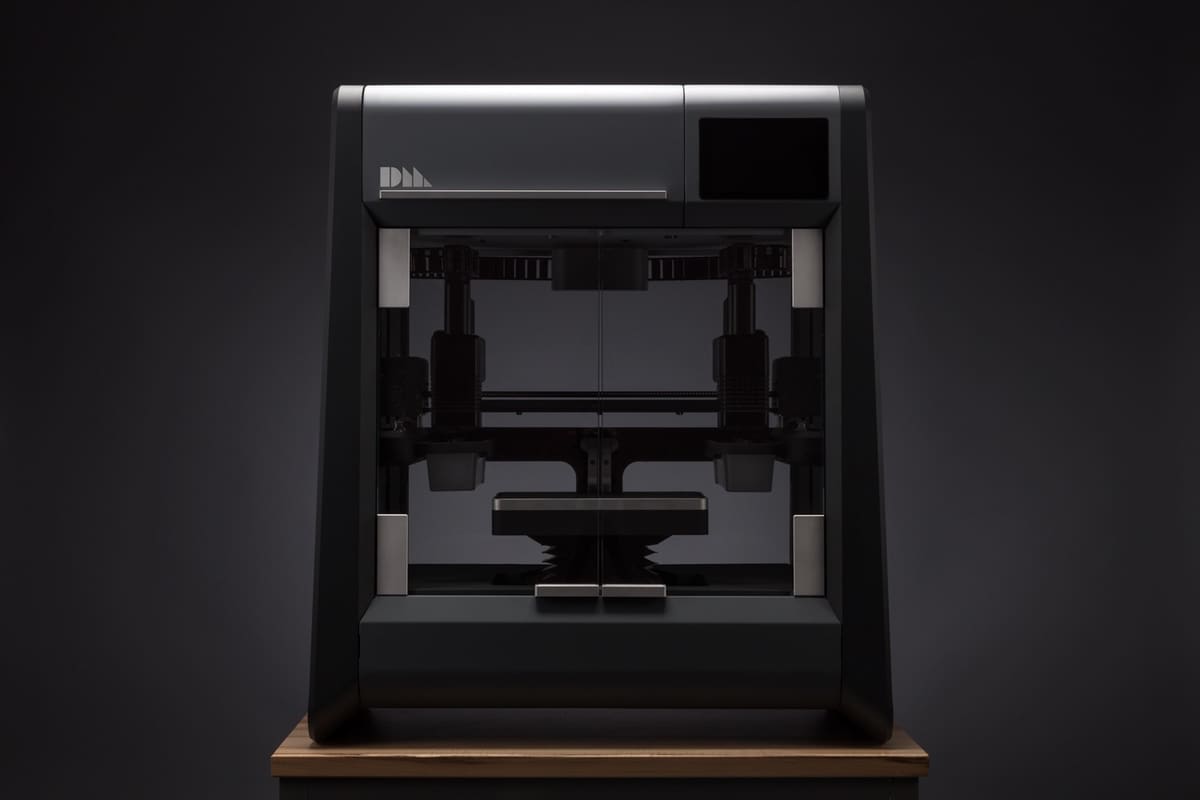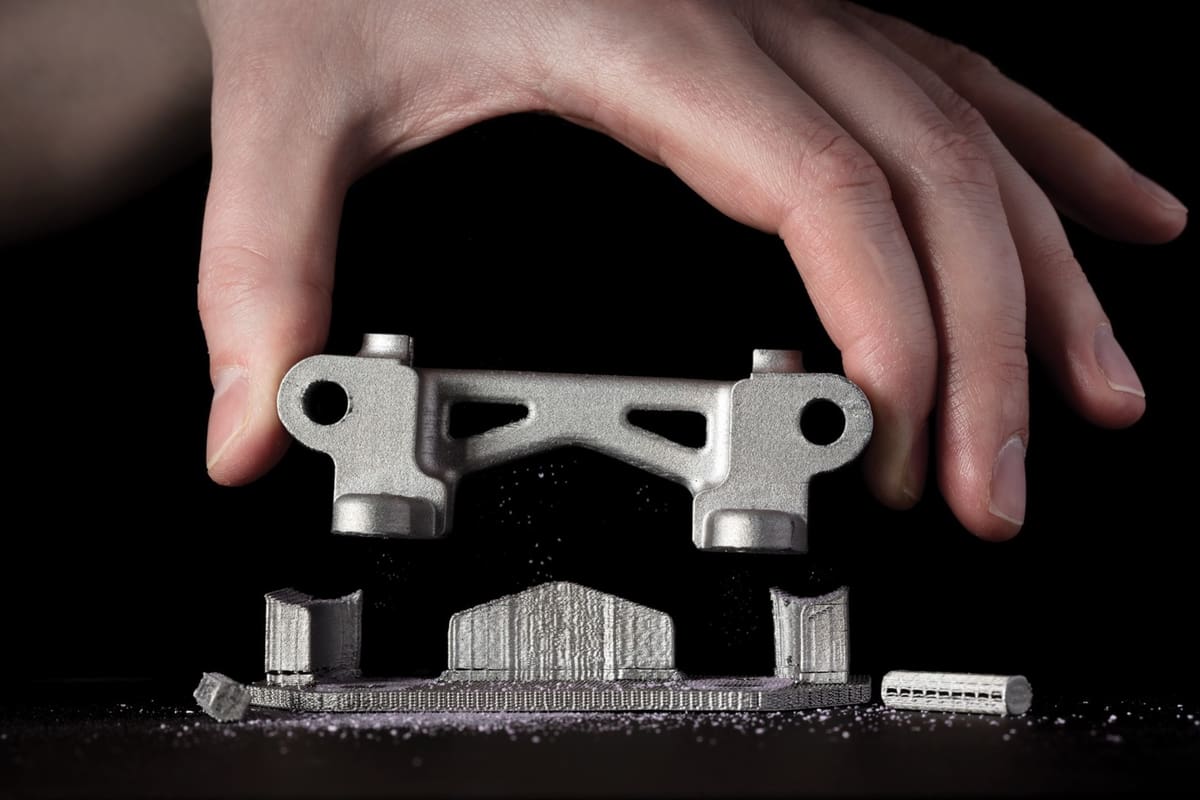How did the Desktop Metal Studio System come to be? The company got its start in 2015, forged in 3D printing hotspot Boston, Massachusetts and driven by veteran founders from MIT and SolidWorks. The startup set its sights on fast, office-friendly metal 3D printing and collected an impressive $97M in funding over the next two years from heavy hitters like GE and Saudi Aramco. In 2017, after two years of mounting anticipation, Desktop Metal announced their first two metal additive manufacturing systems: the Studio and Production Systems.
Initially priced at $120,000, the smaller Desktop Metal Studio System offers metal additive manufacturing (AM) at a fraction of the size and cost of typical industrial metal 3D printers, which can run from $420,000 to well over $1M. The breakthrough technology earned Desktop Metal another $180M in venture funding, carrying a massive vote of confidence from early adopters like BMW, Ford, and Google.
However, the startup’s speculative success came with serious competition. Their Boston-based neighbor Markforged announced a similarly disruptive metal system in the same year, leading Desktop Metal to file a lawsuit alleging IP infringement. In a rare turn of events, especially for the IP battleground that is the 3D printing industry, the two recently agreed to a mutual settlement dismissing all litigation and claims of IP or trade secret misuse.
Desktop Metal is now valued at over $1B, making it one of fastest ventures to reach “unicorn” status. This success was punctuated by the 2018 announcement of the upgraded generation Studio System+, priced at $160,000, and the scalable Studio Fleet that adds extra printers for greater production capacity.
Technology and Workflow

The 3-part Studio System uses Desktop Metal’s patented Bound Metal Deposition (BMD) method to create parts. Similar to the widely used Fused Filament Fabrication (FFF) technology common to most plastic 3D printers, BMD takes rods made of powderized metals bound in a polymer binder then extruders them layer by layer. It’s different from prevailing metal AM processes like Direct Metal Laser Sintering (DMLS) that use lasers to sinter metal supported by a bed of loose powder. BMD extrudes metal parts and support structures through a heated nozzle with no powder required. To prevent metal supports from bonding to metal parts, BMD employs a second extruder to deposit ceramic interface media between the two. By removing the energy-intensive laser and time-consuming powder from the process, Desktop Metal offers a faster and more accessible method for creating metal parts in-house.
After a part is printed, it goes through two post-processing stations. The first is a debinder that immerses the part in a chemical solution where 30-70% of the polymer binder is dissolved and carried away. While some binder remains to help retain the part’s shape, the process creates semi-porous surfaces that enable the rest of the binder to be burned off in the second stage. Next, the part is moved to a furnace where it’s heated to near-melting temperatures. The heat releases the remaining binder, disintegrates the ceramic interface material, and fuses the powderized metal particles together to create a dense, near net shape part.
One of the biggest advantages BMD offers over powder-bed methods like DMLS is the ability to print fully enclosed geometries. In powder systems, any void geometries have to be designed with drainage holes for the support powder to escape during post-processing. With BMD, voids contain zero powder, and the polymer binder can be removed from an enclosure with no drain required. This opens up a wide range of applications for parts with enclosures—the most important being internal support lattices that enable especially durable, lightweight parts.
The three Studio System devices can fit neatly alongside each other in an office, but they’re large enough that you probably don’t want to move them. The printer (94.8 x 82.3 x 52.9 cm) and binder (102 x 74 x 57 cm) are similar in size, and weigh in at 97kg and 150kg respectively. The furnace, on the other hand, measures taller and wider (161.8 x 138.0 x 75.4 cm) and weighs in at nearly a ton, a whopping 798kg. Even at its collective size and weight, Desktop Metal’s Studio System is a disruptive achievement in the world of metal 3D printing, where most devices resemble the basement-sized computers of the 1980’s and require dedicated power and ventilation systems.
Desktop Metal’s Studio System+ is available for $160,000, or $60,000 for just the 3D printer. Their Studio Fleet offering is designed to dramatically increase production capacity by adding additional printers and debinders. The 3 printer, 1 debinder, 1 furnace model advertises a 300% increase in throughput, and the 5 printer, 2 debinder, 1 furnace model claims a 500% increase. This flexibility in scale makes low and mid-volume production runs possible without adding unnecessary duplicate AM systems or without high-cost factory tooling.
For an overview on the metal 3D printing industry, visit our 2018 Metal 3D Printer Guide: The Best Metal 3D Printers in 2025
Software and Materials

The Studio System+ is powered by Desktop Metal’s custom software Fabricate. It prepares typical CAD models with auto-generated support structures then issues specific debinder and furnace settings for the job. Fabricate uses tailored toolpathing and post-processing settings tuned for each material, adding a layer of flexibility and taking the guesswork out of using different metals. Each device in the Studio System features a touchscreen and WiFi/Ethernet connectivity, making it easy to monitor and manage all steps of the process from CAD to finished part.
For materials, Desktop Metal currently supports 6 metals with a staggering 30 more in development. The current line-up features common automotive and aerospace steels, copper, and a temperature/corrosion resistant superalloy. Because BMD technology borrows powderized metals from the gigantic injection molding industry, we’re likely to see even more MIM alloys ported into Desktop Metal’s bound metal rod format in the coming years.
Metal 3D printers were in development as early as 1985, and the industry has long speculated about the tech’s ability to disrupt CNC and injection molding methods. Those early industrial printers were a promising proof of concept, but their complexity and price per part made them hard to adopt and left the industry holding its breath for when the next breakthroughs would push metal 3D printing into more workshops. Desktop Metal’s Studio System is one of those breakthroughs, but the technology still has plenty of room for improvement. The process is time-consuming and the devices still require costly maintenance and consumables, but Desktop Metal’s recent reductions in cost, size, and complexity are impressive first steps.
Desktop Metal Studio System+ Tech Specs

These are the current technical specifications (October 2018) of the Desktop Metal Studio System:
- Print Engine: Bound Metal Deposition (BMD)
- Build Volume: 289 x 189 x 195 mm (11.4 x 7.4 x 7.7 in)
- Printer Size: 948 x 823 x 529 mm (37.3 x 32.4 x 20.8 in)
- Print Chamber: Heated up to 50 °C
- Print Bed: Heated up to 70 °C, vacuum sealed print sheet, auto-leveling
- Print System: Dual extrusion – 1 metal, 1 ceramic interface media
- Max Part Weight: 6.5kg
- Resolution: 50 microns, 100-220 microns
- Connectivity: Ethernet or Wi-Fi
- Weight: 97kg (214lbs)
- Power Requirements: 100-120 VAC, 50/60 Hz, 15 A, 1-phase
- Supported Materials: 17-4 PH, AISI 4140, H13, 316 L, Copper, Inconel 625
- Materials in Development: Alloy Steel 4605, Aluminum (2024, 6061), Carbide (WC-3C), Bronze, Heavy Alloys (Tungsten, Veloxint HardMetal), CarTech (Invar 36, Kovar, BioDur 108, Hiperico 50) Cobalt Chrome F75, Hastelloy X, MP35N (Ni Co Cr Mo), Stainless Steel (15-5 PH, 303, 316L, 410, 420, 430, 440, HK30Nb, Nitronic19), High Performance Steel (Maraging Steel 18Ni300, Veloxint Stainless), Titanium (Ti64, Commercially Pure), Tool Steel (A-2, D-2, M2, S7), BASF Catamold
- Supports: Metal
- Interface Layer: Ceramic media
- Print Preparation: Fabricate software
- File Types: STL, IGES, JT, STEP, VDA-FS, U3D, VRML and native file types (SolidWorks, ProE, etc)
Where to Buy

For more info, samples, or to reserve your own Desktop Metal Studio System+, visit their website or request a quote.
License: The text of "Desktop Metal Studio System: Review the Specs" by All3DP Pro is licensed under a Creative Commons Attribution 4.0 International License.